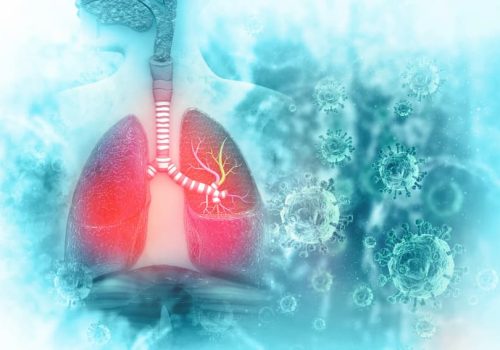When we feel physical pain, we go to the doctor in search of an explanation and, above all, a solution to relieve it. But What happens when the pain is unexplained? What happens when there is no evidence to justify the origin of the discomfort? This is the situation that people with fibromyalgia have to face throughout their lives: living with invisible pain.
In this article we will learn about the particularities of this chronic disease, the most common treatments and how regenerative medicine is beginning to emerge to provide quality of life in the face of such a debilitating condition.
Fibromyalgia, a global health problem.
Fibromyalgia is a prevalent disease that affects people of all ages and genders, although it affects more women (in Colombia, the ratio of fibromyalgia patients is 1 man for every 9 women).
According to data from the Colombian Ministry of Health and Social Protection, it is estimated that between 2% and 4% of the Colombian population suffers from fibromyalgia, although this figure could be underestimated due to lack of awareness and proper diagnosis.
Globally, an estimated 2% to 8% of the adult population suffers from fibromyalgia, making it one of the most common rheumatic diseases. However, despite its high prevalence, fibromyalgia remains underdiagnosed and undertreated in many parts of the world, underscoring the need for continued research and innovative therapeutic options such as regenerative medicine.
A disease that conditions the patient from head to toe.
Fibromyalgia syndrome (FMS) is a chronic and complex condition that causes widespread pain and profound exhaustion. It is often described as head-to-toe pain.
In addition to pain and exhaustion, fibromyalgia may also cause one or more of the following symptoms:
- Sleep disorders: despite getting enough sleep, they may wake up and still feel tired.
- Ankylosis: stiffness of the body.
- Increased headaches or facial pain.
- Abdominal discomfort: digestive disorders, abdominal pain, meteorism, constipation and/or diarrhea.
- Genitourinary problems: increased frequency or increased urgency to urinate, typically without a bladder infection.
- Paresthesia: numbness or tingling (for example, in the hands or feet).
- Temperature sensitivity.
- Skin problems: bothersome symptoms, such as itching, dryness or blemishes.
- Chest symptoms: chest or upper body pains.
- Imbalance: vertigo and/or balance problems.
- Cognitive disorders: difficulty concentrating, “mental sluggishness”, memory loss.
- Sensations in the legs: “restless legs syndrome” (uncontrollable urge to move the legs, especially when resting or resting).
- Environmental sensitivity: hypersensitivity to light, noise, odors and weather changes.
- Depression and anxiety.

Cases of fibromyalgia have been described that begin after specific processes, such as a bacterial or viral infection, a car accident, marital separation, a problem with the children…
In other cases it appears after another disease that limits the patient’s quality of life.
But these triggering agents do not appear to cause the disease, but rather “awaken” it in a person who already has a hidden abnormality in the regulation of his or her responsiveness to certain stimuli.
Although it is not yet known with certainty, it is likely that an abnormal response to stressors plays a major role in this disease.
Low levels of some substances important in pain regulation (particularly serotonin) have also been detected in the nervous system of people with fibromyalgia.
Why is it so difficult to diagnose?
The main problem is that there are no analyses, X-rays, ultrasound scans, in short, tests to confirm its existence. It is a complex clinical diagnosis, but highly important, since we are talking about a disease that can become disabling.
The exact origin of the disease is also unknown, although studies show that traumatic or stressful episodes in patients can trigger the disease.
According to Dr. José María Gómez Argüelles, neurologist and coordinator of the Fibromyalgia Unit at the Ruber Hospital and Quirón in Madrid (Spain), “It is a poorly treated disease in the broadest sense of the word. We have few treatments that work for patients and, from a social point of view, it is frowned upon because since we have no diagnostic test to ensure that you suffer from fibromyalgia, this makes many healthcare professionals doubt its real nature”.
Traditionally, doctors examined 18 specific points (called “trigger points”) on the body to see how many the patient felt pain when pressing firmly on them. If pain was felt in at least 11 points, the diagnosis was very much in the direction of fibromyalgia.
But the new American College of Rheumatology guidelines do not require a tender point examination. Instead, the primary factor necessary for a diagnosis of fibromyalgia is widespread pain throughout the body for at least three months.
To meet the criteria, you must have pain in at least four of these five areas:
- Left upper region, including shoulder, arm, or jaw
- Right upper region, including shoulder, arm, or jaw
- Left lower region, including hip, buttock, or leg
- Right lower region, including the hip, buttock or lower leg
- Axial region, including the neck, back, chest, or abdomen
Pain is usually associated with other symptoms such as tiredness, headache, dryness of mucous membranes, etc.
Fibromyalgia treatment: beyond the pain
According to research conducted in Spain in which 35 qualitative studies on 728 patients diagnosed with fibromyalgia were analyzed, people with fibromyalgia feel stigmatized, overmedicalized and perceive that their treatments do not correspond to the severity of their health condition.
There is no standard treatment, but it must be adapted to each patient according to his or her characteristics. The aim of the treatment is to try to control the symptoms that accompany the disease (musculoskeletal pain, fatigue…) while trying to avoid the side effects of the medication that patients often suffer.
It is necessary to avoid the factors that aggravate the symptoms by adapting life habits and customs to the limitations that pain and fatigue may produce. It is also important to achieve a change of mentality, both in the patient and in those around him/her, seeking a relaxed environment free of constant demands.
Of all the measures that have been used in the treatment of fibromyalgia, physical exercise and adequate muscle strength are especially recommended. Massage, muscle stretching exercises, local heat and some types of electrotherapy (“currents”) can be effective secondarily.
Painkillers or analgesics may help on an ad hoc basis.
Local injections of the painful spots with local anesthetics, especially if followed by local massage, are of great help for severe localized pain.
However, in recent years regenerative medicine has emerged as an increasingly promising alternative to traditional treatments.
Regenerative medicine: a new look at quality of life
To understand the effects on fibromyalgia, we briefly recall the essence of regenerative medicine: it focuses on the use of stem cells, growth factors and other biomaterials to regenerate damaged tissues, modulate the inflammatory response and promote healing in various diseases.
A potential that has already been investigated in fibromyalgia to relieve chronic pain and improve physical function:
A recent study conducted by researchers at Harvard University explored the use of mesenchymal stem cells in the treatment of fibromyalgia. Preliminary results suggest that stem cell therapy can reduce pain, improve sleep quality and increase functionality in patients with fibromyalgia resistant to conventional treatment.
Consequently, we can conclude that the potential benefits of treating fibromyalgia with regenerative medicine include:
1. Pain reduction. Stem cells and growth factors may help modulate the inflammatory response and reduce the sensation of pain in fibromyalgia patients.
2. Improved sleep quality. Sleep disorders represent one of the most common symptoms.
3. Increased functionality. By relieving pain and improving mobility, regenerative medicine could help patients regain physical function and perform daily activities more easily.
In turn, reducing the immune system response may also reduce overall inflammation. If stem cells can reduce neuroinflammation in the brain, it becomes easier for it to interpret messages correctly and for the neurological system to communicate effectively, allowing the patient to tolerate normal pressures and reduce his or her pain level.
Ultimately, stem cell therapy helps to kick-start the metabolic factors, autoimmune factors and neuroimmune factors that regulate this immunological disease, as it not only targets its symptoms, but also goes to its point of origin.
Treatment of fibromyalgia with regenerative medicine generally involves the injection of autologous stem cells or growth factors into specific areas of the body affected by pain and inflammation. This procedure is performed on an outpatient basis, does not require general anesthesia and is extremely safe. In addition, it is tailored to each patient’s needs as indicated by specialists: some patients may require a single treatment session, while others may receive multiple sessions over time to maintain the therapeutic effects.
In a complementary manner, the patient can receive specific treatments according to their pathology, such as shock waves, ultrasound, magnetotherapy, laser, among other therapies.

America Cell Bank is especially sensitive to people with chronic health problems that affect their daily lives and quality of life.
In this sense, fibromyalgia is one of the most representative diseases. For this reason, we dedicate all the capacity and quality of service that has made us a reference in regenerative medicine in Latin America.
To learn more about it, do not hesitate to contact us.
Sources
https://aprende.com/blog/bienestar/cuidado-del-adulto-mayor/que-es-fibromialgia-y-como-se-detecta/
https://www.doctorcarlosochoa.com/la-medicina-regenerativa-en-reumatologia
https://www.publico.es/sociedad/fibromialgia-historia-dolor-invisible-afecta-4-poblacion.html
https://stemwell.co/es/tratamientos/fibromialgia
https://progencell.com/es/acerca-de-tu-condicion-medica/tratamiento-de-celulas-madre-y-fibromialgia/
https://cedofi.com/la-fibromialgia-en-colombia-datos-estadisticos


















